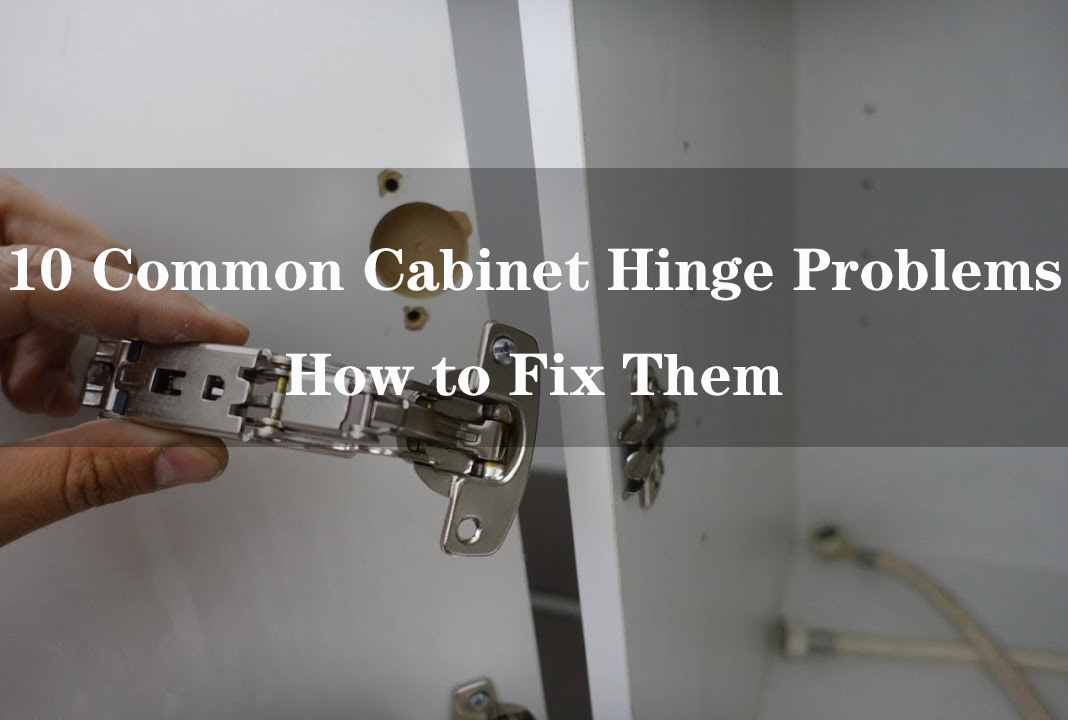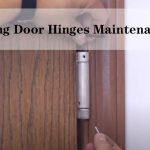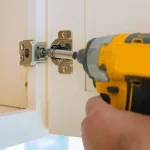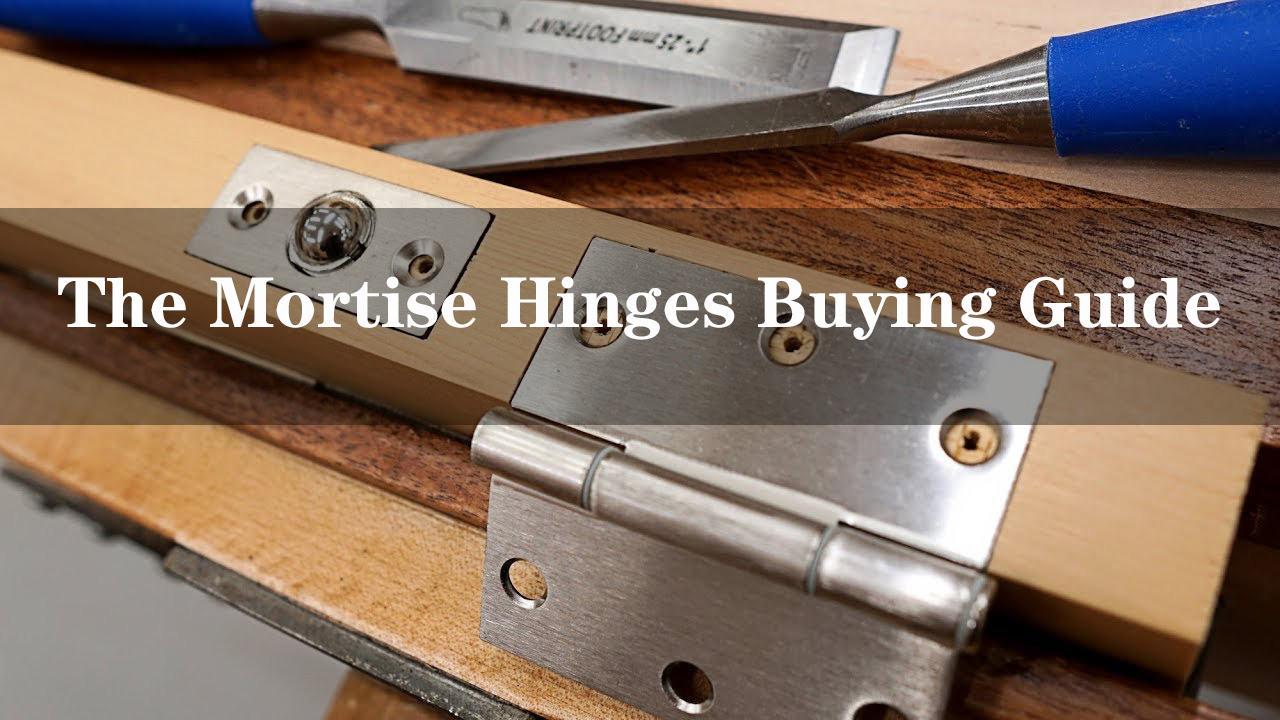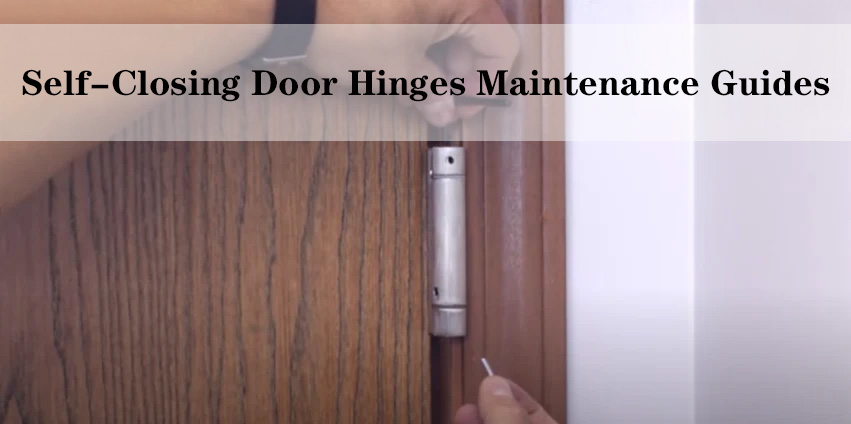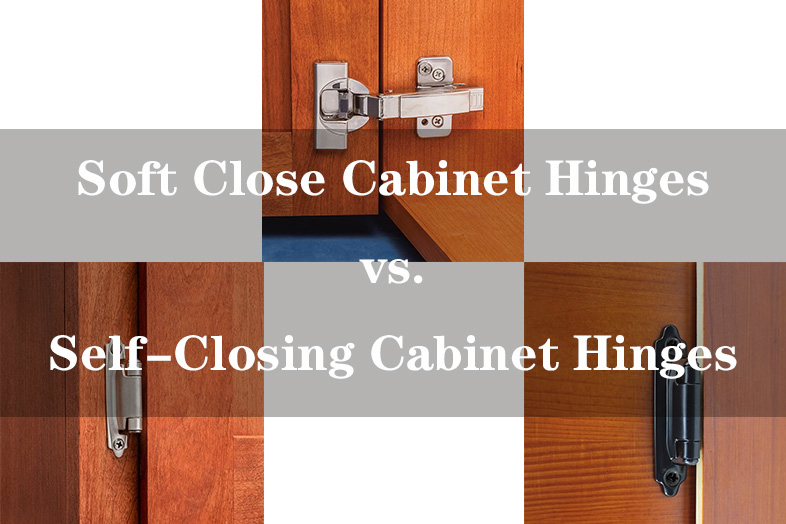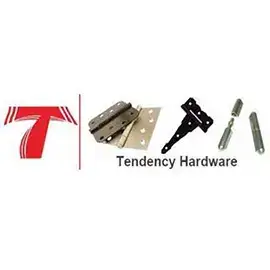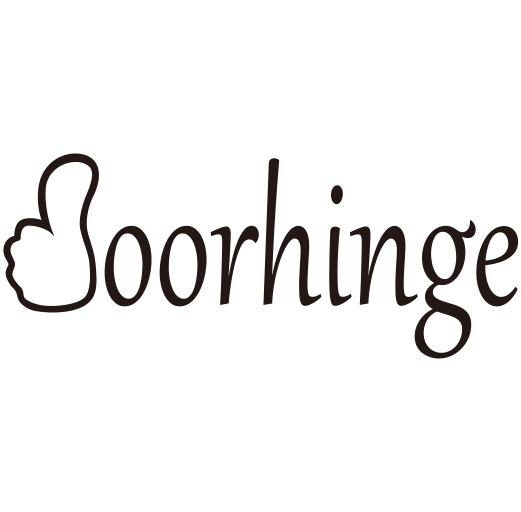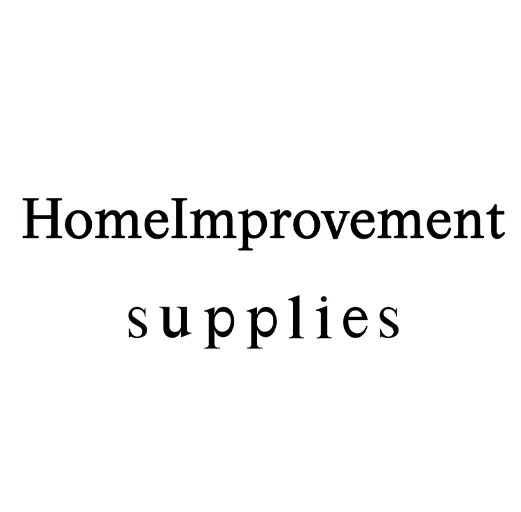Cabinet hinges play a crucial role in the functionality of kitchen and bathroom cabinets, cupboards, and other storage units. Over time, wear and tear can cause various problems that affect how your cabinet doors operate. In this comprehensive guide, we’ll explore some of the most common issues with cabinet hinges and how to fix them efficiently. Whether you’re a DIY enthusiast or simply trying to maintain your home, this blog will give you detailed steps to address each problem.
1. Loose Cabinet Hinges
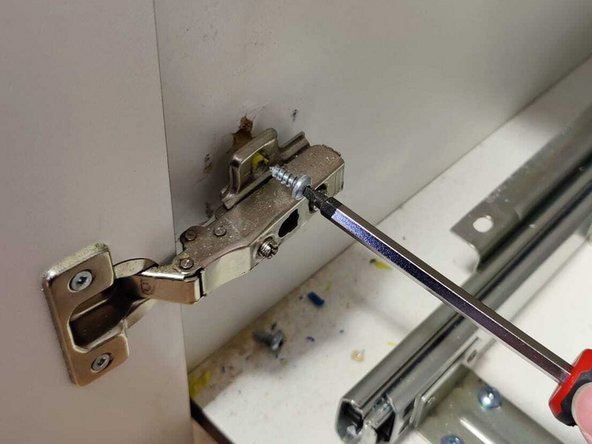
One of the most common problems homeowners face with cabinet hinges is looseness. This often results in the door sagging, not closing properly, or making creaking sounds.
Causes:
The screws holding the hinges to the cabinet or door have loosened over time.
The wood surrounding the screw holes may have worn out or split, causing the screws to lose grip.
How to Fix It:
Tighten Screws: Start by tightening the screws with a screwdriver. Check both the hinge plate attached to the door and the one attached to the cabinet frame.
Use Longer Screws: If the screws are stripped or no longer hold well, replace them with slightly longer screws to ensure a better grip.
Toothpick or Wood Filler Method: If the screw holes are worn out, you can insert toothpicks or matchsticks coated in wood glue into the hole. Allow the glue to dry, then drive the screws back in. Alternatively, you can use wood filler for a stronger repair.
Reinforce with Anchors: For more durability, you can insert plastic or metal anchors into the screw holes before replacing the screws.
2. Squeaky Hinges
A squeaky cabinet door can be very irritating. The good news is that fixing squeaky hinges is generally an easy task.
Causes:
Lack of lubrication between the hinge components.
Dirt, dust, or rust buildup inside the hinge.
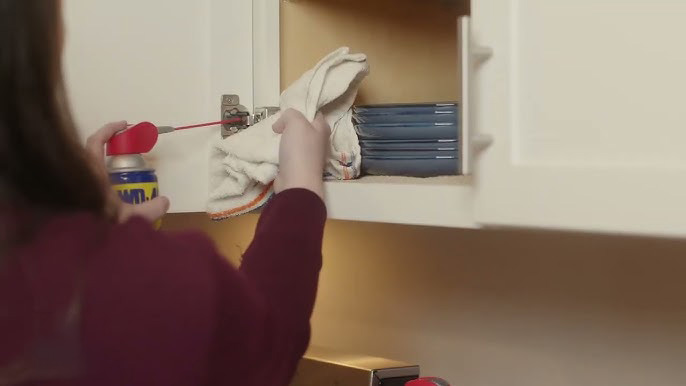
How to Fix It:
Lubrication: Apply a small amount of lubricant such as WD-40 or silicone spray to the hinge joints. Be careful not to over-lubricate, as excess lubricant can attract dirt.
Cleaning: If the hinge is dirty, clean it first with a damp cloth or a toothbrush before applying lubrication. For rusted hinges, consider removing them, soaking in a rust remover solution, and reattaching them.
Use Petroleum Jelly: In the absence of commercial lubricants, petroleum jelly can work just as well to quiet down squeaky hinges.
3. Misaligned Cabinet Doors
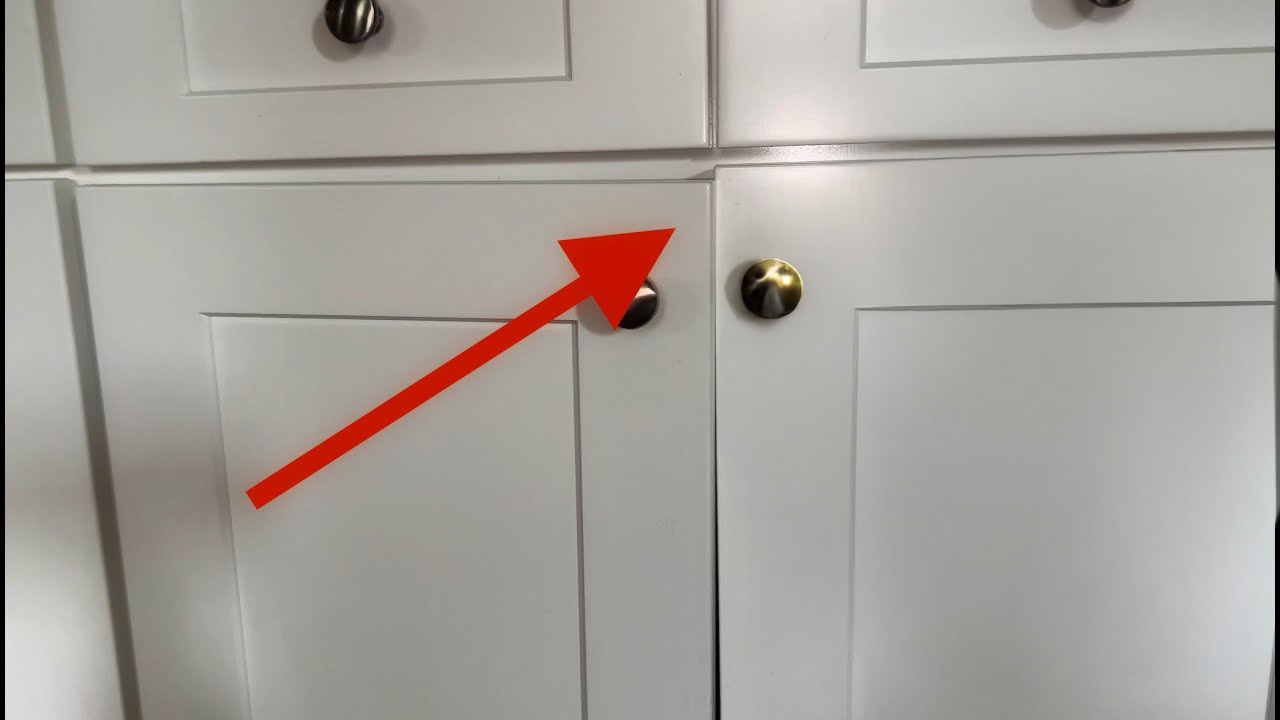
Over time, cabinet doors can become misaligned due to hinge issues or structural changes in the cabinet. This often leads to doors that don’t close properly or are visibly crooked.
Causes:
Hinges have shifted out of place.
Wear and tear in the hinge mechanism or screw holes.
Uneven cabinet door weight distribution.
How to Fix It:
Adjust the Hinges: Most modern cabinet hinges, such as European-style or concealed hinges, have built-in screws for easy adjustment. Loosen the screws slightly, reposition the door, and tighten again until it’s aligned properly.
Replace Worn Hinges: If the hinge itself is bent or damaged, it may need to be replaced. Make sure you select a replacement hinge that matches the current one.
Install Additional Hinges: If the door is particularly heavy and causing strain on the existing hinges, adding an extra hinge in the middle of the door can help distribute the weight more evenly.
4. Stiff or Hard-to-Open Cabinet Doors
Cabinet doors that are difficult to open may be due to improperly installed hinges, buildup of dirt, or swelling of the wood.
Causes:
Improper alignment or incorrect hinge size.
Swollen wood due to humidity or water damage.
Hinges that are too tight.
How to Fix It:
Check Alignment: As with misaligned doors, adjust the hinges to ensure that the door opens smoothly.
Clean and Lubricate the Hinges: Often, dirt or a lack of lubrication can make doors stiff. Cleaning the hinges and applying lubricant can help restore smooth movement.
Replace Hinges: If the hinges are too tight and no amount of adjustment or lubrication works, consider replacing them with new ones that allow for smoother operation.
Repair Swollen Wood: If the door or cabinet frame has swollen due to humidity, you may need to sand the affected areas to allow for better movement.
5. Hinges Pulling Away from the Cabinet
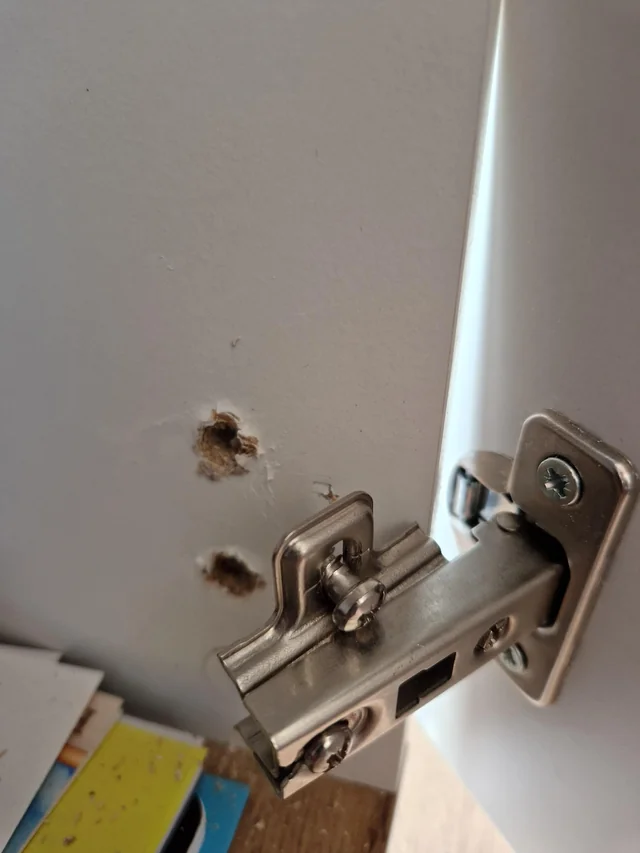
If the hinges seem to be pulling away from the cabinet, leaving gaps between the hinge and the cabinet frame, you need to address the issue before the door falls off completely.
Causes:
The screws holding the hinge in place are loose or stripped.
The wood around the screw holes is damaged or worn out.
How to Fix It:
Reinforce the Screws: Tighten the screws, but if they are stripped, replace them with slightly larger or longer screws to get a better hold.
Use Wood Fillers: For worn-out holes, use wood filler or wooden dowels to fill the gaps. Once the filler dries, drill new pilot holes and replace the screws.
Add Metal Brackets: If the cabinet is under heavy use, consider adding metal brackets to reinforce the area around the hinge, providing extra strength.
6. Hinge Rust and Corrosion
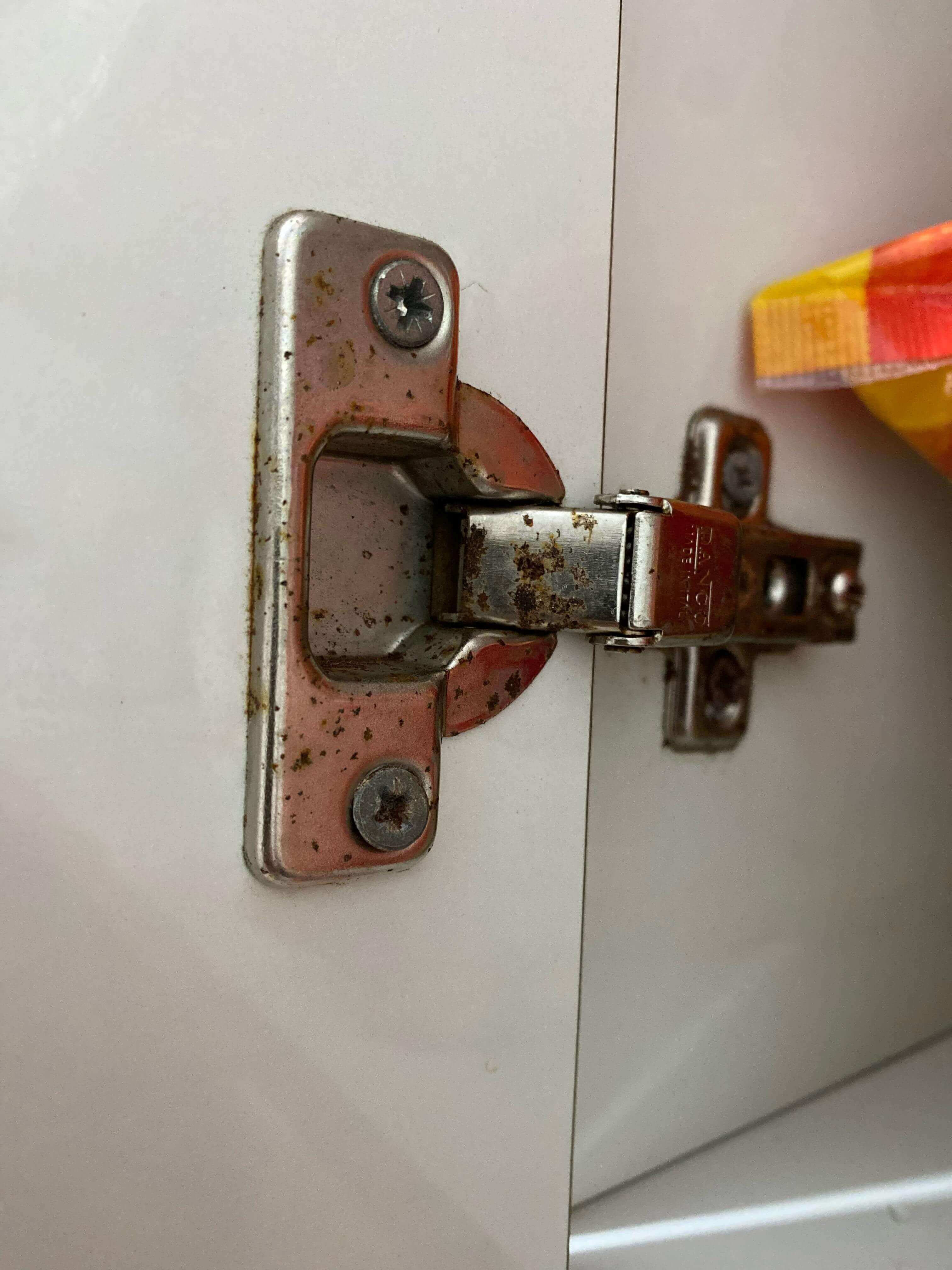
Rust and corrosion can affect both the appearance and functionality of cabinet hinges. This issue is more common in bathrooms or kitchens, where moisture levels are high.
Causes:
Exposure to moisture and humidity.
Poor-quality materials that are not corrosion-resistant.
How to Fix It:
Remove Rust: Use a rust remover product or scrub the hinges with steel wool or sandpaper to remove surface rust. Apply a rust inhibitor afterward to prevent future corrosion.
Replace Hinges: If the rust has deeply corroded the hinge, it’s better to replace it with one made from stainless steel or another corrosion-resistant material, such as brass or coated metal.
Use Protective Coating: Applying a protective finish, such as a clear coat, can shield hinges from moisture and prolong their life.
7. Cabinet Door Won’t Close Properly
Doors that don’t close completely or that spring open after being shut can be a major inconvenience. This is often a hinge issue.
Causes:
Misaligned or improperly installed hinges.
Worn-out hinge springs (in the case of self-closing hinges).
Hinges that have shifted or come loose over time.
How to Fix It:
Adjust the Hinges: Tighten the screws holding the hinges in place and ensure the door is correctly aligned.
Replace the Hinge Springs: For self-closing hinges, you may need to replace worn-out springs or the entire hinge mechanism if they no longer function as intended.
Install Magnetic or Roller Catches: If the hinges are fine but the door still doesn’t stay closed, installing magnetic or roller catches can help keep the door in place when shut.
8. Broken or Damaged Hinges
Sometimes, hinges can crack, bend, or break altogether, particularly on older or frequently used cabinets.
Causes:
Hinges made of low-quality materials.
Continuous wear and tear.
Over-tightening of screws.
How to Fix It:
Replace the Hinge: The only solution for a broken hinge is to replace it. Make sure to purchase a hinge that matches the size and style of the original. If possible, upgrade to a hinge made from stronger materials like stainless steel or brass for greater durability.
Reinforce the Door or Cabinet: If the door has been damaged by the broken hinge, reinforce the door or cabinet frame before installing the new hinge. This might involve filling in holes, sanding down surfaces, or adding extra screws.
9. Cabinet Door Gaps
If there are gaps between the cabinet doors or between the doors and the cabinet frame, it can look unsightly and may affect the functionality of the cabinet.
Causes:
Poor hinge alignment.
Warped or damaged cabinet doors.
Incorrect hinge type for the cabinet.
How to Fix It:
Adjust Hinges: Many cabinet hinges allow for vertical, horizontal, and depth adjustments. By loosening the screws and repositioning the door, you can often eliminate unwanted gaps.
Replace Hinges: If the hinges are the wrong type for the cabinet, such as using overlay hinges when you need inset hinges, replace them with the correct ones.
Repair Warped Doors: Warped doors may need to be sanded or planed down to fit properly. In extreme cases, the door may need to be replaced altogether.
10. Hinge Pin Popping Out
Hinge pins are responsible for holding the two parts of the hinge together. When they start to pop out, the door may become loose or wobbly.
Causes:
Wear and tear over time.
Loose hinge installation.
How to Fix It:
Reinsert the Pin: If the pin has started to work its way out, tap it back into place with a hammer. You may also want to add a drop of oil to help it slide more easily.
Replace the Pin: If the pin is bent or damaged, remove it and replace it with a new one. Most hardware stores sell hinge pins separately.
Install New Hinges: If the pin continues to pop out despite repairs, it may be a sign that the hinge itself is worn out and needs to be replaced.
Conclusion
Cabinet hinges may seem like a minor component of your kitchen or bathroom setup, but they play a crucial role in the functionality and aesthetic of your home. By knowing how to identify and fix common hinge problems, you can extend the life of your cabinets and ensure that they continue to operate smoothly. Whether it’s a loose hinge, a squeaky door, or a broken pin, most hinge issues can be resolved with the right tools and a bit of patience.
Remember, the key to avoiding many of these problems is regular maintenance. Periodically check your hinges, clean them, and make any necessary adjustments before small issues become big headaches. If you find that a hinge problem persists despite your best efforts, it may be time to consider replacing your hinges with higher-quality, more durable models.
